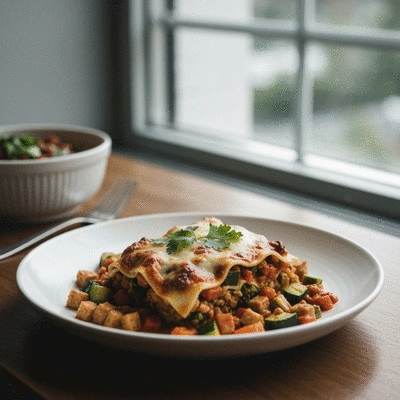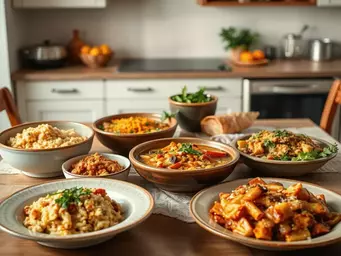Emotional Benefits The Feel-Good Factors
- ✓ Familiarity & Nostalgia
- ✓ Stress Relief & Serotonin Boost
- ✓ Social Connection & Joy
Comfort food offers a temporary lift, connecting us to cherished memories and social bonds.

What if your favorite comfort food could also boost your mood? Understanding the intricate relationship between what we eat and how we feel is not just about taste—it's about emotional well-being! Dive into the world of comfort food and discover its deeper significance.
This visual highlights the interplay between the emotional benefits and potential nutritional drawbacks of comfort food choices.
Comfort food offers a temporary lift, connecting us to cherished memories and social bonds.
Over-reliance can lead to negative health outcomes and mood fluctuations.
When we talk about comfort food, we often think of those dishes that make us feel warm and fuzzy inside. But what is it about these meals that connects so deeply with our emotions? At Sloppedia, we believe that comfort food isn't just about taste—it's a powerful source of emotional well-being. Exploring this connection can lead to a greater appreciation of the dishes that warm our hearts and fill our bellies!

Defining comfort food is an essential first step in understanding its impact on our emotional well-being. Comfort food varies from person to person, often reflecting personal history, culture, and even childhood experiences. For some, a bowl of creamy mac and cheese might evoke memories of family gatherings, while for others, a hearty bowl of pho could symbolize warmth from home. Whatever the dish may be, its significance often lies in the feelings and memories it conjures up.
Comfort food serves as a bridge between our daily lives and the emotions we experience. It nurtures us during tough times and celebrates joyful moments. Here are a few key factors that define comfort food:
Understanding these factors allows us to appreciate why we turn to specific foods for comfort, especially during stressful times. Isn’t it fascinating how food can play such a pivotal role in our emotional landscape?
Our choices in comfort food can greatly affect our mood. Studies have shown that indulging in these familiar dishes can boost our serotonin levels, which is often referred to as the "feel-good" hormone. Research published by News Medical Life Sciences highlights that comfort eating can be a coping mechanism for stress, providing temporary emotional relief. Here are some psychological effects of comfort food:
However, it’s important to recognize that while comfort food can provide a temporary lift in mood, balance is key. At Sloppedia, we encourage you to explore the stories and recipes behind various comfort foods, turning moments of indulgence into opportunities for connection and joy!
Now that we've explored the emotional ties between comfort food and mood, let's dive into the nutritional insights that reveal how what we eat influences how we feel. The relationship between food and mood is complex, but understanding it can empower you to make informed choices about your comfort food.
Nutrition plays a huge role in mental health, and certain foods can enhance or hinder your emotional state. So, what should we consider when selecting our comfort foods?
Carbohydrates and sugars are often staples in comfort food, and they have a significant impact on our mood. When we consume these foods, our bodies release serotonin, which elevates our mood. Research from the National Institutes of Health further explains how dietary components, including carbohydrates, can influence neurotransmitter synthesis and mood regulation. It's important to note, however, that not all carbs are created equal:
Choosing the right carbohydrates can help maintain a positive mood without the rollercoaster of sugar highs and lows. What’s your go-to comfort food that incorporates these essentials?
While comfort food can offer emotional relief, there are potential pitfalls we should be aware of. Over-reliance on certain comfort foods can lead to negative consequences:
It's crucial to balance indulgence with awareness—ensuring that our comfort food choices nourish both body and soul.
Finding a balance between indulgence and nutrition can be challenging, but it’s possible! At Sloppedia, we believe in the joy of comfort food, and that includes making healthier choices. The Comprehensive Reviews in Food Science and Food Safety journal emphasizes how culinary innovation can transform traditional comfort foods into healthier alternatives by modifying ingredients and preparation methods. Here are some ideas for healthy comfort food options:

By making mindful adjustments to our beloved recipes, we can enjoy the comforting experience of food while still prioritizing our well-being. Where will you start with your next comfort food creation?
What do you think about the emotional connection between comfort food and your personal experiences? Share your thoughts below:
As we dive deeper into the world of comfort food, it’s important to recognize the emotional and nutritional interplay at play. Comfort food is not just about flavors; it’s about memories, feelings, and how we nourish ourselves. Understanding this connection can truly elevate our dining experience!
Let’s recap some key takeaways to consider when choosing your comfort food:
By keeping these points in mind, we can make more informed decisions about the comfort foods we enjoy. I always encourage food lovers to embrace the joy of cooking while being aware of the nutritional impacts of their choices!
Mindful eating is a practice that allows us to savor our food fully. It’s more than just what’s on our plates; it’s about how we engage with our meals. Taking a moment to reflect on our feelings before, during, and after eating can enhance our experience and help build a healthier relationship with food.
So, how can we encourage this practice? Here are some simple strategies to incorporate mindfulness into your meals:
By embracing mindful eating, you’ll not only enjoy your comfort dishes more but also connect emotionally with what you consume. It’s a beautiful way to intertwine culinary joy with self-awareness.
I love hearing about people’s unique comfort food experiences! At Sloppedia, we believe that food brings us together, and sharing stories can create a rich tapestry of culture and connection. Whether it's a family recipe passed down through generations or a new discovery, your stories are what make this community vibrant.
To engage with fellow food enthusiasts, consider these ways to share your comfort food journey:
By sharing our stories, we can inspire one another and explore the comforting world of food together!
Now that we’ve explored the connection between comfort food and emotion, it’s time to take action! Finding recipes that not only satisfy your cravings but also lift your spirits is an exciting journey. At Sloppedia, we’ve compiled a variety of recipes that cater to your mood and preferences.
Here’s how you can get started:
Remember, cooking is all about creativity and exploration. So don’t hesitate to dive into the kitchen and whip up something delicious that lifts your mood!
With the rise of food blogs and social media, the inspiration for comfort food is just a click away. Platforms like Instagram and Pinterest are bursting with culinary creativity that can guide you toward new comfort food adventures!
Here are a few ways to explore these resources:
At Sloppedia, we love curating content that inspires culinary exploration. So, jump into the online food community and let it enhance your comfort food journey! Let’s celebrate the joy of comfort food together!
Here is a quick recap of the important points discussed in the article:
Global Comfort Foods You’ll Love

Did you know that comfort food often serves as a bridge to our cultural roots? It’s not just about
Exploring Comfort Food Datasets

Have you ever wondered why certain foods feel like a warm embrace on a cold day? Comfort foods are n
Global Comfort Foods You’ll Love
Global Comfort Foods to Savor
Exploring Comfort Food Datasets
Finding Comfort Food for You
Messy Comfort Dishes to Enjoy